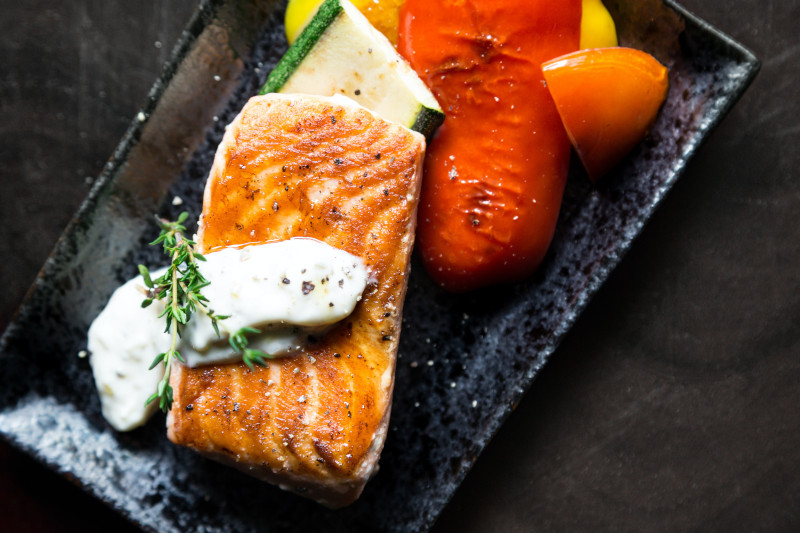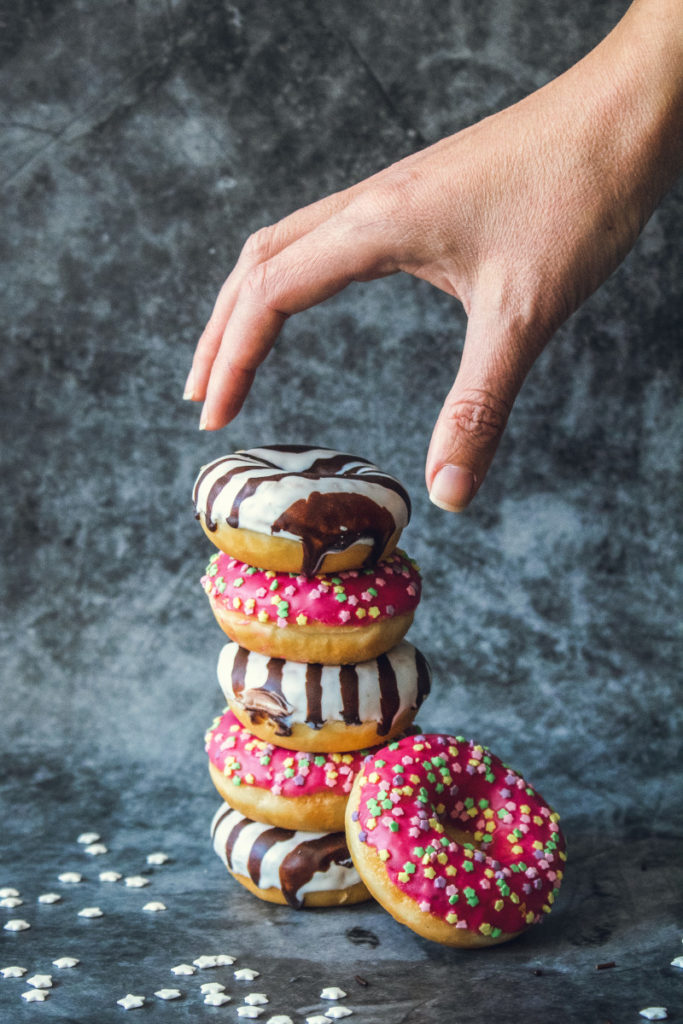Imagine waking up every morning feeling energized and full of life. Imagine looking in the mirror and loving what you see. Imagine having the confidence to do anything you set your mind to.
This is what the keto diet can do for you.
The keto diet is a high-fat, low-carbohydrate diet that has been shown to have a number of health benefits, including:
- Weight loss
- Improved blood sugar control
- Reduced risk of heart disease
- Increased energy levels
- Improved mood and cognitive function

If you’re looking for a way to improve your health and well-being, the keto diet is a great option. Learn more about the why and how here.
But following the keto diet can be challenging. That’s where this article comes in.
In this article, I’ll share my 10 essential keto diet tips to help you succeed. I’ll cover everything from choosing the right foods to managing your cravings to avoiding common pitfalls:
- Choose the right foods.
- Manage your cravings.
- Avoid common pitfalls.
- Listen to your body.
- Don’t be afraid to experiment.
- Make it a lifestyle.
- Find a keto community.
- Make keto-friendly meals and snacks ahead of time.
- Don’t be afraid to eat out.
- Be patient and consistent.
So if you’re serious about following the keto diet and seeing results, read on!
Here are 10 essential Keto Diet Tips to help you succeed:
Tip #1: Choose the right foods
When following the keto diet, it is important to choose foods that are low in carbohydrates and high in fat. Good keto foods include:

- Meat: Beef, chicken, pork, lamb, fish, and eggs
- Non-starchy vegetables: Leafy greens, broccoli, cauliflower, zucchini, and asparagus
- Healthy fats: Avocados, nuts, seeds, olive oil, and coconut oil
It is also important to avoid foods that are high in carbohydrates, such as bread, pasta, rice, potatoes, sugary drinks, and fruit.
Carbohydrates are the body’s main source of energy, but when you eat too many carbohydrates, your body converts them into sugar. This can lead to weight gain, high blood sugar levels, and other health problems.
Fat, on the other hand, is a slow-burning source of energy. When you eat fat, your body breaks it down into ketones, which your body can use for energy instead of sugar.
Here are some other keto diet tips for choosing the right foods:
- Focus on whole, unprocessed foods.
- Choose foods that are high in healthy fats, such as avocados, nuts, seeds, olive oil, and coconut oil.
- Eat plenty of non-starchy vegetables.
- Avoid processed foods, sugary drinks, and fruit.
If you are unsure whether or not a food is keto-friendly, there are many resources available online and in libraries. One of my favorite sources for this information is an app called Carb Manager. It labels foods as “Keto Grade: Friendly/Limit/Strictly Limit” to make it easy to choose the right foods.
Tip #2: Manage your cravings
One of the biggest challenges of following the keto diet is managing cravings for carbohydrates. When you first start the keto diet, your body is used to getting most of its energy from carbohydrates. So when you cut back on carbohydrates, your body may crave them. Here are a few keto diet tips to manage your cravings:
- Drink plenty of water and other unsweetened beverages. This will help to keep you hydrated and full.
- Eat regular meals and snacks to keep your blood sugar levels stable. When your blood sugar levels drop, you are more likely to experience cravings.
- Find healthy keto snacks that you enjoy, such as nuts, seeds, and hard-boiled eggs. This will help to satisfy your cravings without sabotaging your diet.
- Avoid processed foods and sugary drinks, which can trigger cravings.
If you are struggling to manage your cravings, there are a few other things you can try:
- Get enough sleep. When you are well-rested, you are less likely to experience cravings.
- Manage your stress levels. Stress can trigger cravings, so it is important to find healthy ways to manage stress, such as exercise, yoga, or meditation.
- Talk to a doctor or dietitian. They can provide you with additional support and tips for managing your cravings.

Tip #3: Avoid common pitfalls
Here are a few common keto pitfalls to avoid:
- Not eating enough fat. Fat is the main source of energy on the keto diet. If you do not eat enough fat, your body will not be able to produce ketones efficiently. This can lead to fatigue, headaches, and other problems. Additionally, not eating enough fat can cause you to feel hungry and dissatisfied, which can lead to overeating and breaking your keto diet.
- Eating too much protein. Protein is important, but too much protein can be converted to carbohydrates in the body. This can take you out of ketosis and sabotage your results. Aim to get 20-30% of your daily calories from protein.
- Not drinking enough water. When you are in ketosis, your body releases more fluids through urine. This is why it is important to drink plenty of water on the keto diet to avoid dehydration. Aim to drink at least 2 liters of water per day.
- Giving up too easily. The keto diet can be challenging, but it is important to stick with it to see results. It may take a few weeks for your body to adjust to the keto diet. During this time, you may experience some side effects, such as fatigue, headaches, and muscle cramps. These side effects are usually temporary and go away as your body adapts to the keto diet.
If you are experiencing any negative side effects, it is important to talk to your doctor or a registered dietitian. They can help you to adjust your diet and make sure that you are getting the nutrients you need.
By following these tips, you can avoid common keto pitfalls and increase your chances of success on the keto diet.
Tip #4: Listen to your body
Everyone reacts differently to the keto diet. It is important to listen to your body and adjust your diet as needed. Some people may experience side effects such as fatigue, headaches, and muscle cramps. Others may find that they have more energy and feel better than ever before. If you are feeling tired, weak, or unwell, it may be a sign that you need to make some changes.
If you are experiencing any negative side effects, it is important to talk to your doctor or a registered dietitian. They can help you to adjust your diet and make sure that you are getting the nutrients you need.
Here are some tips for listening to your body on the keto diet:

- Pay attention to how you feel after eating different foods. If certain foods make you feel tired or unwell, avoid them. Honestly, this should go without saying whether you are following a keto diet, another diet, or no diet at all.
- Make sure you are getting enough sleep. When you are well-rested, you are more likely to feel good and have the energy to follow the keto diet.
- Manage your stress levels. Stress can trigger cravings and make it difficult to stick to the keto diet. Find healthy ways to manage stress, such as exercise, yoga, or meditation.
Tip #5: Don’t be afraid to experiment
There is no one-size-fits-all keto diet. What works for one person may not work for another. That is why it is important to experiment and find what works best for you.
Here are a few tips for experimenting with the keto diet:
- Try different recipes. There are many keto recipes available online and in cookbooks. Experiment with different recipes to find ones that you enjoy.
- Listen to your body. Again, pay attention to how you feel after eating different foods. If certain foods make you feel tired or unwell, avoid them.
- Make small changes. Don’t try to change your entire diet overnight. Then you’ll never know what foods your body is reacting negatively to. Start by making small changes and gradually add or remove foods as needed.
It is also important to remember that the keto diet is a journey, not a destination. There will be times when you slip up or make mistakes. That is okay. Just pick yourself up and keep going. The most important thing is to be patient and consistent.
Tip #6: Make it a lifestyle
The keto diet is most effective when followed as a lifestyle, not just a quick-fix diet. This means making changes to your eating habits and lifestyle that you can stick with long-term.
Here are a few tips for making the keto diet a lifestyle:
- Make keto-friendly meals and snacks ahead of time. This will make it easier to stick to the keto diet when you are busy. There are many keto recipes available online and in cookbooks. You can also batch cook meals and snacks to save time. More on this later!
- Keep it simple. If you’re not the type to follow recipes and meal plans to a “T” or don’t have the time or money to go out buying tons of special ingredients, then just keep your meals simple. All you need is a healthy protein, paired with a low-carb vegetable and cooked in a healthy fat. For more information on keeping it simple, read this blog post.
- Don’t be afraid to eat out. There are many restaurants that offer keto-friendly options. You can also ask restaurants to customize your order to make it keto-friendly. For example, you can ask for a salad with grilled chicken or fish instead of fried chicken or fish. You’ll read more about this later, too!
- Be patient and consistent. The keto diet takes time and effort to see results. Don’t get discouraged if you don’t see results immediately. Just keep at it and you will eventually reach your goals.
- Make small changes at a time. Don’t try to change your entire diet overnight. Start by making small changes, such as switching to sugar-free drinks or replacing high-carb snacks with keto-friendly snacks.
- Find keto-friendly alternatives to your favorite foods. There are many keto-friendly alternatives to popular foods, such as keto bread, keto pizza, and keto ice cream—check out my blog for recipes! This can make it easier to stick to the keto diet without feeling like you are missing out on your favorite foods.
- Don’t be afraid to experiment. There are many different ways to follow the keto diet. Experiment with different foods and meal plans to find what works best for you.
The keto diet can be a great way to improve your health and well-being. By following these tips, you can make the keto diet a lifestyle and achieve your long-term health goals.
Tip #7: Find a keto community
One of the best ways to stay on track with the keto diet is to find a keto community. A keto community is a group of people who are all following the keto diet. This can be an online community, such as a Facebook group or forum, or an in-person community, such as a local meetup group.
There are many benefits to joining a keto community. Here are a few:

- Support: Having a community of people who understand what you are going through can be very supportive. You can share your struggles and successes with each other, and you can offer each other encouragement and advice.
- Tips and recipes: You can share tips and recipes with each other. This is a great way to learn new things and to find new foods and meals that you enjoy.
- Accountability: Having a community can help you to stay accountable. You know that there are people who are cheering you on, and you don’t want to let them down.
Tip #8: Make keto-friendly meals and snacks ahead of time
This will make it easier to stick to the keto diet when you are busy and don’t have time to cook. There are many keto recipes available online and in cookbooks.
There are many ways to make keto-friendly meals and snacks ahead of time. Here are a few keto diet tips to make life easier:
- Batch cook meals and snacks. This is a great way to save time and to have keto-friendly meals and snacks on hand when you need them. There are many keto-friendly recipes that can be batch cooked, such as soups, stews, and casseroles.
- Make hard-boiled eggs. Hard-boiled eggs are a great keto-friendly snack that is easy to make and transport. You can make a batch of hard-boiled eggs at the beginning of the week and have them on hand for a quick and easy snack.
- Prepare keto-friendly snacks. There are many keto-friendly snacks that you can prepare ahead of time, such as nuts, seeds, and berries. I like having chopped veggies and keto-friendly hummus, ranch or blue cheese for dipping in the fridge. You can also make keto-friendly snacks, such as keto cookies and muffins.
By making keto-friendly meals and snacks ahead of time, you can make it easier to stick to the keto diet and to avoid unhealthy temptations.
Tip #9: Don’t be afraid to eat out
There are many restaurants that offer keto-friendly options. You can also ask restaurants to customize your order to make it keto-friendly. For example, you can ask for a salad with grilled chicken or fish instead of fried chicken or fish.
Here are a few keto diet tips for eating out:
- Choose a restaurant that offers keto-friendly options. Many restaurants now offer keto-friendly options on their menus. You can also check online reviews to see if other people have had success ordering keto-friendly meals at a particular restaurant. Even in Taiwan, which is way behind in diet times, there are a few keto-friendly cafes that I love.

- Ask the server about the keto options. If you are unsure whether or not a particular dish is keto-friendly, ask the server. They may be able to suggest keto-friendly options or to customize an order for you.
- Be prepared to make changes to your order. If you are ordering a dish that is not keto-friendly, you may be able to make changes to make it keto-friendly. For example, you can ask for the bread to be omitted or for the sauce to be made on the side. This isn’t always easy in Taiwan, as they’re often resistant to modifying orders here, but at some restaurants I’ve been able to do this. At restaurants owned by friends, I’ve been able to get burgers with lettuce in place of buns, or pasta dishes with extra vegetables instead of the pasta. Be creative, you never know what great dishes you can come up with under pressure!
By following these tips, you can enjoy eating out on the keto diet without sabotaging your results.
Tip #10: Be patient and consistent
The keto diet is not a quick fix. It takes time and effort to see results. Don’t get discouraged if you don’t see results immediately. Just keep at it and you will eventually reach your goals.
Here are a few tips for staying motivated on the keto diet:
- Set realistic goals. Don’t expect to lose a lot of weight overnight. Set realistic goals for yourself, such as losing 1-2 pounds per week.
- Track your progress. Keeping track of your progress can help you to stay motivated. You can track your weight, body measurements, and other health markers, such as blood sugar levels.
- Find a keto buddy. Having a keto buddy can help you to stay accountable and motivated. You can support each other and share your progress with each other. I personally find it so much easier when my husband is also following a keto diet!
- Don’t give up. Everyone experiences setbacks on the keto diet. If you have a setback, don’t give up. Just pick yourself up and keep going. Remember, a cheat meal doesn’t need to be a whole cheat day, and a cheat day shouldn’t turn into a cheat weekend. If you slip up or have a cheat meal, just get back on track as soon as possible!
The keto diet can be a great way to improve your health and well-being. By being patient and consistent, you can achieve your long-term health goals.
I would also like to add that it is important to be kind to yourself on the keto diet. Remember that it is a journey, not a destination. There will be times when you slip up or make mistakes. That is okay. Just learn from your mistakes and keep going.
Final Thoughts on Keto Diet Tips
The keto diet is a powerful tool that can help you to improve your health and well-being. By following the tips in this article, you can increase your chances of success on the keto diet.
Here is a summary of the key points from each section:
- Tip #1: Choose the right foods. Focus on whole, unprocessed foods that are low in carbohydrates and high in fat.
- Tip #2: Manage your cravings. Drink plenty of water and unsweetened beverages, eat regular meals and snacks, and find healthy keto snacks that you enjoy.
- Tip #3: Avoid common pitfalls. Eat enough fat, don’t eat too much protein, drink enough water, and don’t give up too easily.
- Tip #4: Listen to your body. Pay attention to how you feel after eating different foods and make adjustments as needed.
- Tip #5: Don’t be afraid to experiment. There is no one-size-fits-all keto diet. Experiment with different foods and meal plans to find what works best for you.
- Tip #6: Make it a lifestyle. Make changes to your eating habits and lifestyle that you can stick with long-term.
- Tip #7: Find a keto community. Having a community of people who are also following the keto diet can be very supportive.
- Tip #8: Make keto-friendly meals and snacks ahead of time. This will make it easier to stick to the keto diet when you are busy.
- Tip #9: Don’t be afraid to eat out. There are many restaurants that offer keto-friendly options. You can also ask restaurants to customize your order to make it keto-friendly.
- Tip #10: Be patient and consistent. The keto diet takes time and effort to see results. Don’t get discouraged if you don’t see results immediately. Just keep at it and you will eventually reach your goals.
I encourage you to take action on what you have learned in this article and to start following the keto diet. The keto diet can help you to lose weight, improve your blood sugar control, reduce your risk of heart disease, and increase your energy levels.
Here is a final bit of advice: Be kind to yourself on the keto diet. Remember that it is a journey, not a destination. There will be times when you slip up or make mistakes. That is okay. Just learn from your mistakes and keep going.
I believe in you!

